
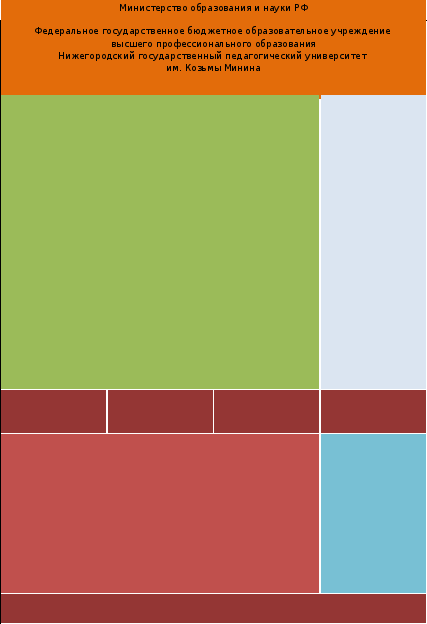
Министерство образования и науки РФ
Федеральное государственное бюджетное образовательное учреждение
высшего профессионального образования
Нижегородский государственный педагогический университет
им. Козьмы Минина
Учебное пособие
для студентов III курса
отделения «Английский язык»
УДК 43(07)
ББК 81.432.1р3
Х
Учебное пособие студентов III курса отделения «Английский язык». Н.И.Фитасова. – Н.Новгород: НГПУ, 2012. – 70 с.
Предлагаемое учебное пособие включает три темы «Travelling», «Medicine» «Higher Education» к курсу «Практический курс английского языка» и предназначены для аудиторной и самостоятельной работы студентов III курса отделения «Английский язык». Заключительный блок содержит рассказы для домашнего и индивидуального чтения.
УДК 43(07)
ББК 81.432.1р3
Автор-составитель: Н.И. Фитасова, ст. преподаватель
Рецензент: С.Л. Оленников, канд. педагогических наук
Travelling. City.
Master the pronunciation of the phonetically oriented phrases and rhymes. Do the follow up activities.
Over the mountains, over the plains,
Over the rivers, here come the trains.
Carrying passengers, carrying mail,
Carrying their loads without fail.
Make the sentences Passive.
Meet my people at three.
Make up mini-dialogues with the phrase.
Cars can’t be parked here after dark.
Make up mini-situations with the phrase.
You won’t be able to take much luggage on your voyage.
Make up mini-dialogues with the phrase.
It’ against law to fly low.
Make up mini-situations with the phrase.
Mrs. Harries stayed in Venice for a few weeks.
Make up mini-dialogues with the phrase.
Her baggage was barrels and baskets.
Make up all types of questions.
That man’s a reckless driver.
Make up mini-dialogues with the phrase.
She bought a boat for her son.
Make up mini-situations with the phrase.
What’s the mileage on the speedometer?
Make up mini-dialogues with the phrase.
East or West – home is best.
Make up mini-situations with the phrase.
It’s a pity that Miss Kitty doesn’t live in our city.
Make up mini-dialogues with the phrase.
Arrange the lexical units into three columns according to the headings:
Airport, cabin, captain, carriage, compartment, deck, departure lounge, dining car, ferry, flight, gate, seasick, security check, to land, to take off, turbulence.
|
Airplane |
Boat |
Train |
|
|
|
|
|
|
|
|
Match the words with their definitions.
Berth, booking-office, cabin, compartment, deck, flight, gangway, luggage van, pier, platform, porter, porthole, suitcase, terminal, visibility.
a place to sleep on a ship or train
a place where you can buy tickets at a train or bus station or at a theatre
a case with flat sides and a handle use for carrying clothes.
a building or a set of buildings at an airport where air passengers arrive and leave.
how far or well you can see.
a journey made by air, especially in a plane
a small room on a ship in which you live or sleep.
a bridge placed between the side of a ship and land so people can get on and off.
one of the separate sections which a coach/car in a train is divided into
one of the floors of a ship or a bus
a long low structure built in a lake, river or the sea and joint to the land at one end, used by boats to allow passengers to get on and off.
a round window in the side of a ship or an aircraft.
a person whose job is carrying people’s bags and other loads, especially at a train station, an airport or in a hotel
a coach/car on a train for carrying passenger’s luggage
the place beside a railway track where you get on and off the train in a station
Read the text and be ready to translate.
Travelling I
Nowadays travelling has become a highly organized business. There are express trains, huge ships, cars and jet-air-liners, all of which provide us with comfort and security.
Some may be fond of travelling. For me to travel is to go through a gradual state of nerve wrecking.
Once my wife and I decided to take a holiday trip. So I went to an agency to book a cabin on board a ship. While I was away my wife was supposed to be packing. When I returned my wife was in doubt whether to take a trunk or just a few suitcases to carry our things in. It was no use urging her to hurry or to be ready at a certain time as trying to speed her up was to make her excited and bad tempered. We had only an hour at our disposal so I simply began to throw the things into our suitcases without folding them. Within twenty minutes or so we were ready to go. I found the taxi and requested the deriver to hurry and get us to the station in time. How the taxi-driver managed to take us to the station alive is difficult to understand as he drove at breakneck speed through the heavy traffic of the city. We got to the station with a few minutes to spare. In the compartment we were not the only ones to want to put our luggage on the racks. Our fellow-passengers wanted to put theirs as well. It was no easy matter and enough to make anyone angry. When we had to change stations to go aboard the ship my wife wanted me to carry all the luggage. She didn’t want to waste money on porters but I had no desire to take the risk of breaking my back so I went on a strike. My wife gave in. It took the porter three trips to transfer it all but half of the luggage was left unopened during the voyage.
Put 12 questions to the text.
Use the phrases in bold in sentences of your own.
Read the text and be ready to translate.
Travelling II
The experienced traveler has learnt the necessity of always being in time, of having his baggage checked early and he knows where his ticket is.
The inexperienced traveler is likely to be behind time, or he is likely to be an hour earlier. When he buys a ticket he neglects to place it where it will be secure and often loses it. Sometimes he forgets a portion of his baggage.
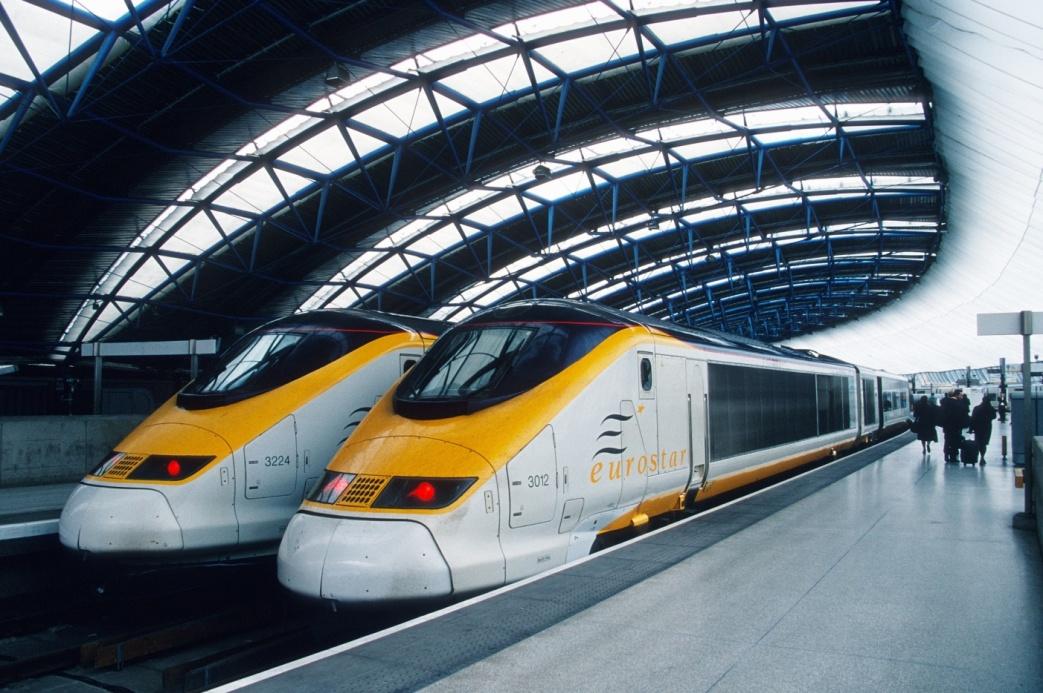
The following suggestions relating to railway travelling may be of service.
Before your journey consider what route you want to take, learn what time the train leaves. At least a day before you must consider what baggage you want to take and have it packed. Take as little as possible.
Be sure your watch or clock is perfectly correct with railroad time. Arrive at the station half an hour before the starting time.
Gentlemen should avoid smoking in the presence of those to whom it may be offensive.
Before beginning a journey consider carefully what will be the most suitable to ware for the occasion.
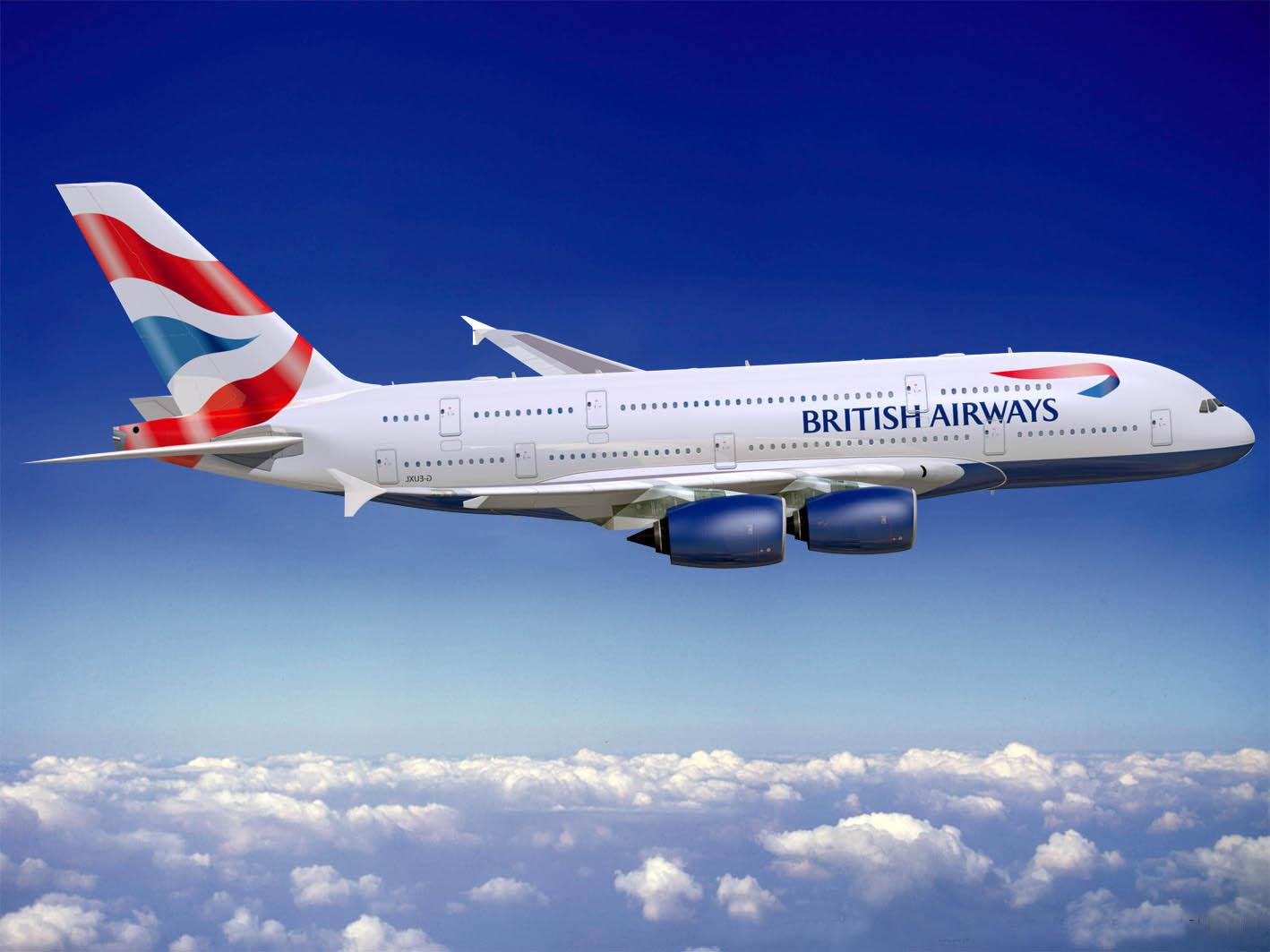
If you travel by air you should observe some regulations: fasten your seat-belt before take-off and landing. After the seat-belt sign has been turned off you are free to walk around the cabin, unless en route weather conditions require the crew to ask you to return to your seat. You should observe also no-smoking sign which will be on during take-off and landing. Reading lights, fresh air inlet and call button are usually located over your seat. The tray table pulls down from the back of the seat ahead of you and makes you feel comfortable when you are eating.
Put 12 questions to the text.
Use the phrases in bold in sentences of your own.
Study the pictures and make up situations of your own.
1.
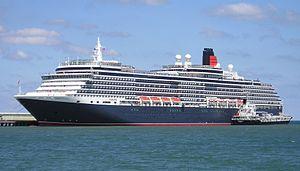
Queen Victoria
2.
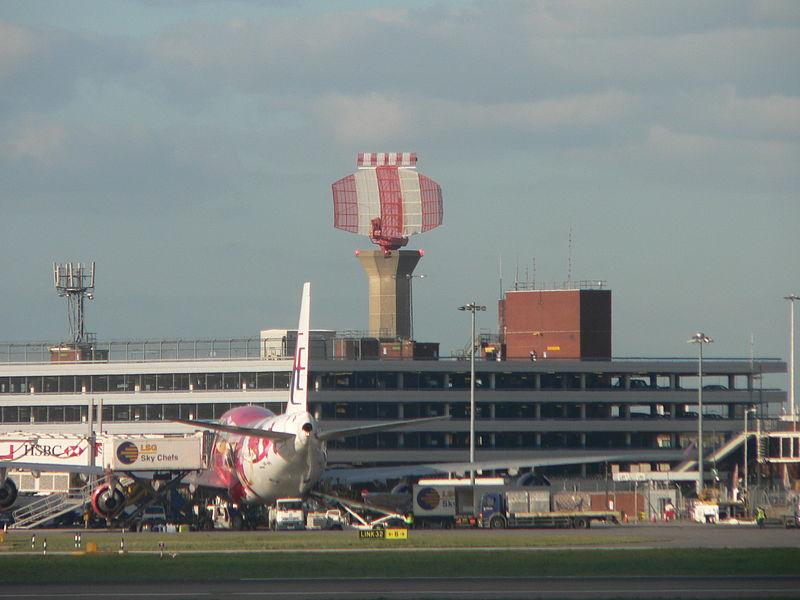
Heathrow Airport London
Study the ticket information and answer the questions.
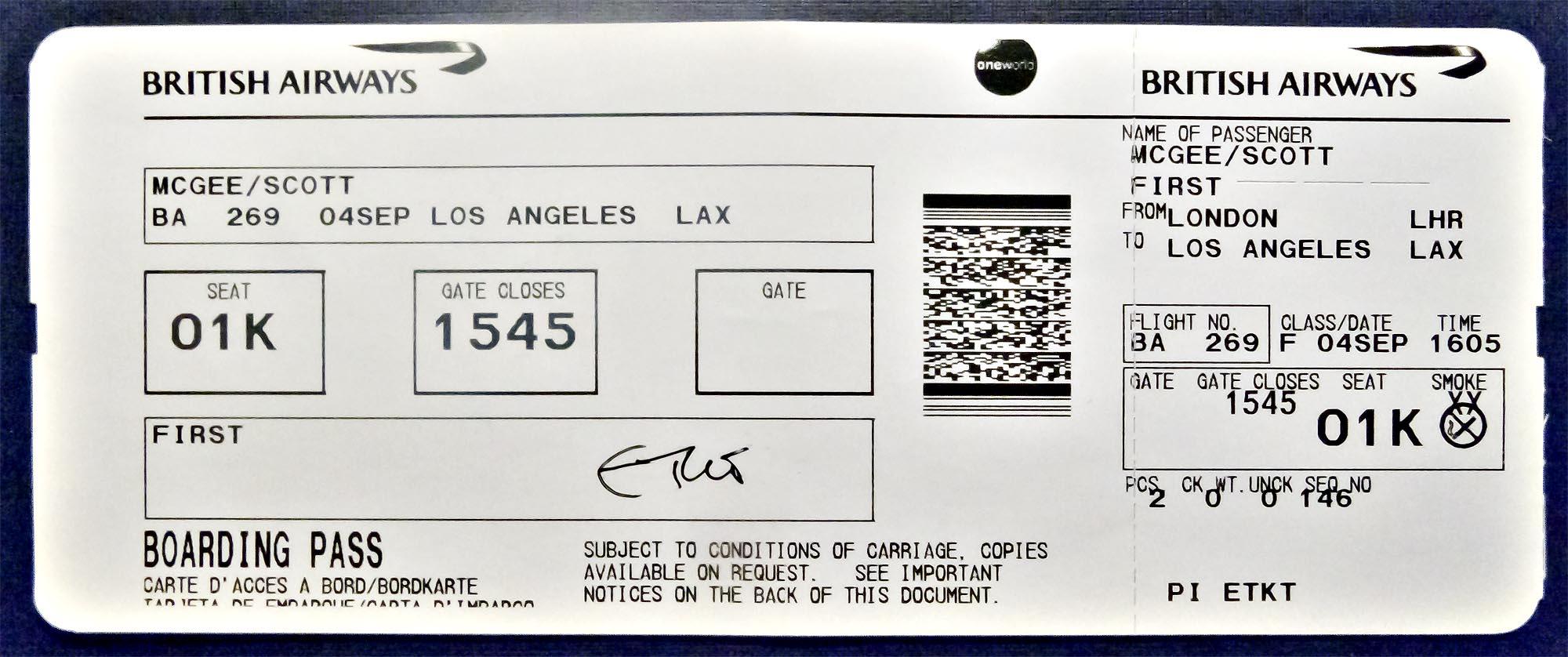
What is the name of the traveler?
What mean of transport is this ticket for?
What company?
What are the cities of departure and arrival?
What is the number of the seat?
What is the date?
What is the time?
Make up a dialogue at the booking office, using the information from the ticket.
Read the text.
LONDON
Two thousand years ago London was a small village by the River Thames. Then the Romans came and built a town, and thousands of people lived there. Now, in the twenty first century, London is the biggest city in Britain, with more than seven million people. It is the capital city of the United Kingdom, the home of Queen Elizabeth the second, and the home of the British Government. Millions of visitors come to London every year.
Visitors like to see the royal buildings, and sometimes you can go inside them too.
Buckingham Palace stands at the end of the Mall. The Mall is a long road, and begins at Trafalgar Square. About 300 people work at the palace, because it is the Queen’s home and her ‘office’. Heads of governments and royal visitors from around the world meet the Queen here.
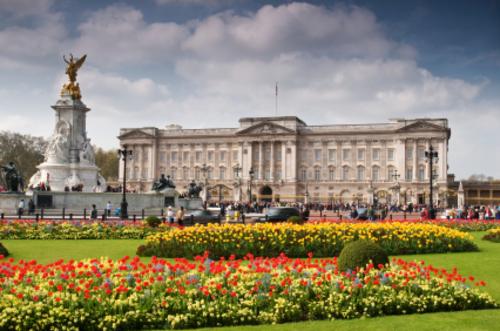
Buckingham Palace
At half past eleven most mornings, the soldiers change the guard at Buckingham Palace. It takes about thirty minutes, and you can stand in front of the palace and watch.
In August and September you can usually visit some of the rooms in the palace, and see paintings by Vermeer, Rembrandt, and Rubens. You can also visit some of the palace Gardens.
The Lord Mayor is the most important person in London after the Queen. The first Mayor of London was Henry Fitzailwyn, in 1189.
The City is the oldest part of London. It is the home of the Bank of England and many other big offices. Only about five thousand people live in the City, and at the weekends the streets are quiet. But between Monday and Friday, nearly half a million people go to work in the banks and offices there.
The Tower of London is the City’s oldest building. It stands at the Tower Bridge and next to the River Thames. In the past, it was a palace and a prison. Kings (and sometimes queens) put their most important prisoners there, and many of these prisoners never came out alive.
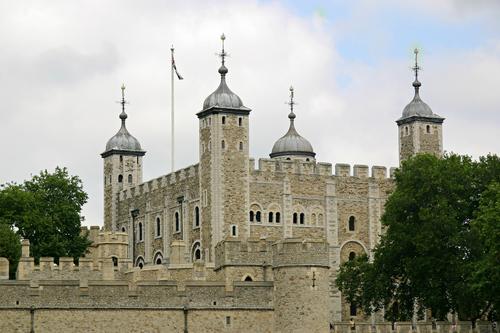
The Tower of London
St. Paul’s Cathedral is in the centre of the City. Its dome is110 metres high and it is the second biggest dome in the world, after St. Peter’s in Rome.
South of Trafalgar Square is a long road called Whitehall. Most of the buildings in this road are government offices.
Walk down the road to Parliament Square, and you go past Downing Street. It is not a long street. The Prime Minister – the head of the British Government – lives at 10 Downing Street.
Westminster Abbey is London’s oldest and perhaps most famous church. English kings and queens always have their coronations here – from the time of William the Conqueror in 1066 to today in the twenty-first century.
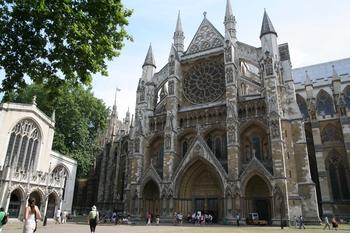
Westminster Abbey
The Houses of the Parliament is the home of the British Government. The clock high up on the building is called Big Ben, but really Big Ben is the bell in the clock. You can hear Big Ben ring every hour.
You cannot see London without a visit to the River Thames. You can walk along the river, go across its many bridges, or go in a bat and see London from the river.
The
Millennium Bridge is the London’s newest bridge – the first for
one hundred years. 
Then there is the London Eye, a big wheel 135 metres high. It was built in 2000 and celebrates the Millennium. It never stops moving, but it moves very slowly. Visitors travel in the capsules on the wheel for 30 minutes, and when the weather is good, you can see for 40 kilometres across London. London Eye
When you are tired of buildings, you can visit one of London’s many beautiful parks.
Hyde Park first opened to the people of London in the seventeenth century. It is not far from the shops of busy Oxford Street, but it is nice and quiet. You can walk or sit under the trees. In the centre there is a lake called the Serpentine, and you can take a boat out on the water.
There are usually a lot of people at the Speaker’s Corner, near Marble Arch. Some people come here because they want to tell the world important or interesting things – about the government, or science, or the church, or the end of the world.
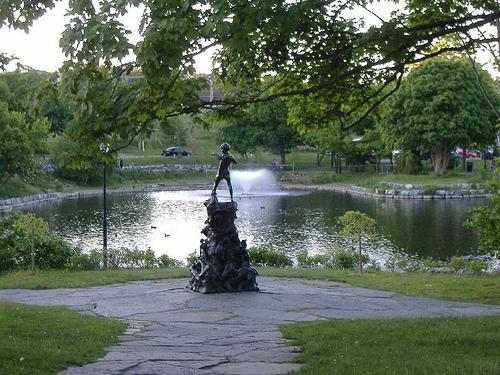
KeKensington Gardens. Statue of Peter Pan.
Kensington Gardens is next to Hyde Park. Here you can see a Statue of Peter Pan, the famous boy in the book Peter Pan by J. M. Barrie. There is also a playground here, called the Diana, Princess of Wales playground. Many people want to remember Princess Diana. She lived near here in Kensington Palace, and the playground has lots of exciting things for children.
Regent’s Park is the home of London Zoo. The zoo opened in 1828, and has animals from all over the world. There is also a theatre in the park. On a summer’s evening, you can sit out and watch a play by Shakespeare. Or you can see the park from the water – take a boat along the canal from Camden Lock to Little Venice.
St. James’s Park is next to the Mall. It is a small park but very beautiful, and it is the oldest of the royal parks. Lots of birds live on and around the lake in the centre of the park.
The British Museum in Great Russell Street is the biggest museum in Britain, and the oldest museum in the world. It opened in 1759. There are 94 galleries (it is a four kilometre walk through all these galleries), a reading room, and bookshops.
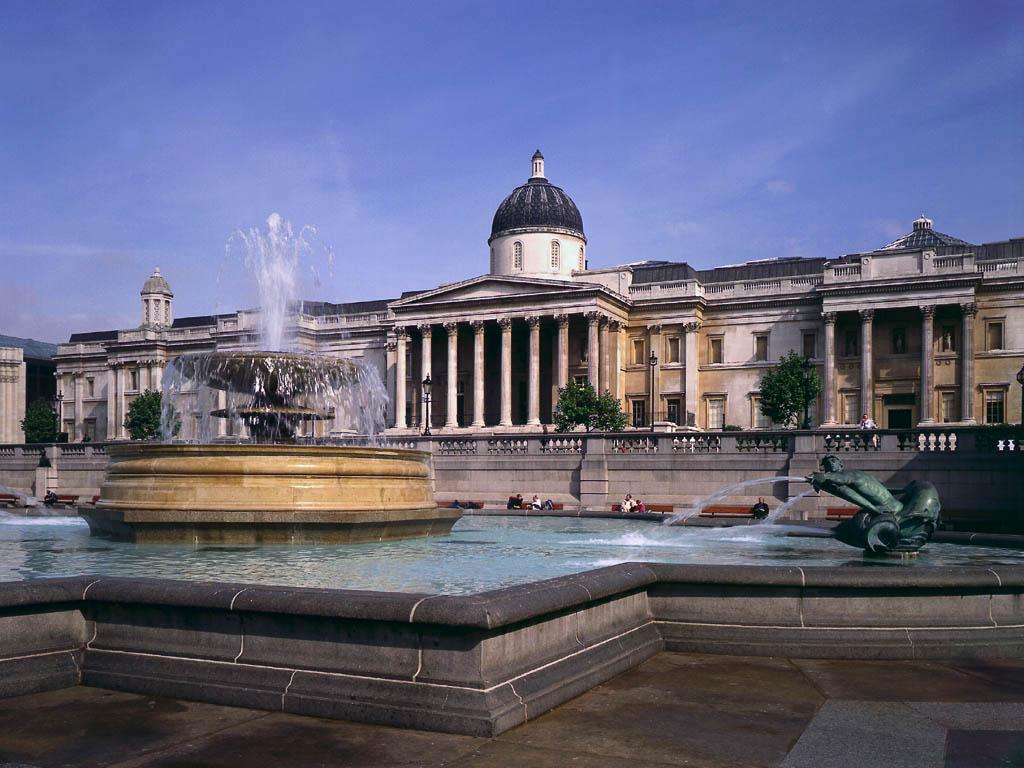
The National Gallery
Four million people visit the National Gallery in Trafalgar Square every year. There are more than 2300 pictures here – the earliest from the thirteenth century.
London’s West End has some of the best theatre in the world, so tickets can be expensive.
The National theatre is in the South Bank Centre by the River Thames. It opened in 1976, and there are three different theatres in the building.
At the Royal Opera House in Covent Garden you can hear wonderful music and singing from all over the world. For more music, go to the Royal Albert Hall in Kensington Gore next to Hyde Park.
Big
red buses… Buckingham Palace… the London Eye… Big Ben these are
only some of the attractions in London. It is a big, beautiful,
noisy, and exciting city. More than eleven million visitors come
every year from countries around the world.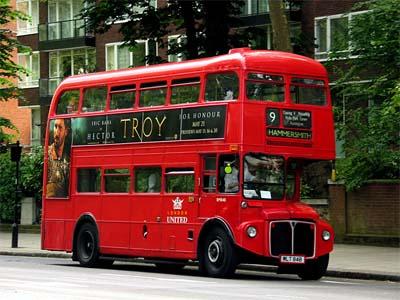
So, when are you coming to London?
Multiple-choice test:
London is the biggest city in …
Europe
Britain
the world
The Mall is …
a road
a shopping centre
a park
… is the Queen’s home and her ‘office’.
Westminster Abbey
Buckingham Palace
the Tower
Changing the guard at Buckingham palace takes …
a quarter of an hour
half an hour
an hour
In … you can usually visit some of the rooms in the palace.
August and September
December and January
May and June
… is the most important person in London after the Queen.
The Lord Mayor
The Prime Minister
The Archbishop
The Bank of England is located in …
the West End
the East End
the City
St. Paul’s Cathedral …
has the second biggest dome in the world
is the oldest cathedral in Britain
is the place of coronation
The Prime Minister lives at …
21 Whitehall
12 Trafalgar square
10 Downing Street
English kings and queens always have their coronations in Westminster Abbey from the time of …
William the Conqueror
Henry VIII
Queen Victoria
Really Big Ben is …
the bell
the tower
the clock
The London Eye is a …
bridge
museum
big wheel
A lake called the Serpentine is in the centre of
Regent’s Park
Kensington Gardens
Hyde Park
The Diana is …
a playground in Kensington Gardens
a monument in Piccadilly
an art gallery in Soho
London Zoo opened in
1728
1828
1928
The British Museum in Great Russell Street is …
The oldest museum in the world
The biggest museum in Europe
The strangest museum in Britain
The earliest paintings in the National Gallery are from …
the tenth century
the twelfth century
the thirteenth century
Covent Garden is the home of …
opera and ballet
filmmaking
rock music
